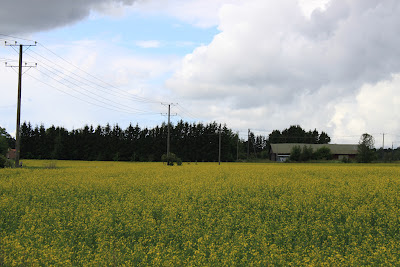As promised
way back in June, I am going to share the experience I had upgrading my computer.
First, to give you a little background information, I purchased my Macbook laptop four years ago from Apple. However, it was not new when I got it. Instead, Apple had refurbished it (Apple sells refurbished computers at discounted prices on its online store). Along with saving me some money, buying a refurbished computer meant that I was essentially reusing something that already existed.
The computer has served me well from the beginning, but within six months, I began to make some changes. First, I added more memory, which I purchased from a great company called Other World Computing. Memory improves a computer's performance, and OWC sells memory that meets or exceeds Apple's standards for considerably less than Apple sells its memory. I also bought an external hard drive from OWC, giving me a reliable place to back up my information.
For the next few years, I didn't make many changes to the computer. Then, this spring, I had to buy a replacement for my power adapter. I got a used one in good condition from OWC for considerably less than the ones Apple was selling.
The next decision I made about the computer was a pivotal one. At almost four years old, the computer's software was a bit out-of-date, and I was getting low on hard drive space, so I realized I would soon have to either get something new or update what I had. I decided on the latter option.
Upgrading the computer involved getting a new hard drive (actually a solid state drive) from OWC and a new operating system plus additional software. I also decided to invest in protecting the hardware with a keyboard cover, screen protector (both from OWC), and a shell case for the exterior. (Since I was making a commitment to keep my computer around for a while, I figured I should protect it as best I could.)
All the updates were successful (it was actually pretty easy), and my computer is running faster than it ever did. Also, with the help of a kit I got from OWC when I ordered the solid state drive, I was able to turn my old hard drive into another backup device.
Just a couple of weeks ago, I found out I needed to replace the computer's battery. Again, I turned to OWC for a less expensive, more powerful version of what Apple was selling.
Importantly, I feel like my computer is truly my own now. I was able to participate in the creation process that made it what it is today (it's probably as much an OWC computer as it is an Apple). Above all, I was able to get what amounted to a new computer without discarding my old one. This helps conserve resources, making me even happier and more proud about my upgrade.
To check out what is available at OWC (they also have equipment for PCs), click
here. The company is accredited by the Better Business Bureau, receiving an A+ ranking. Also, it offsets all its carbon emissions and makes its solid state drives in the United States, further cutting down on the carbon footprint when it ships to customers in the US.




































